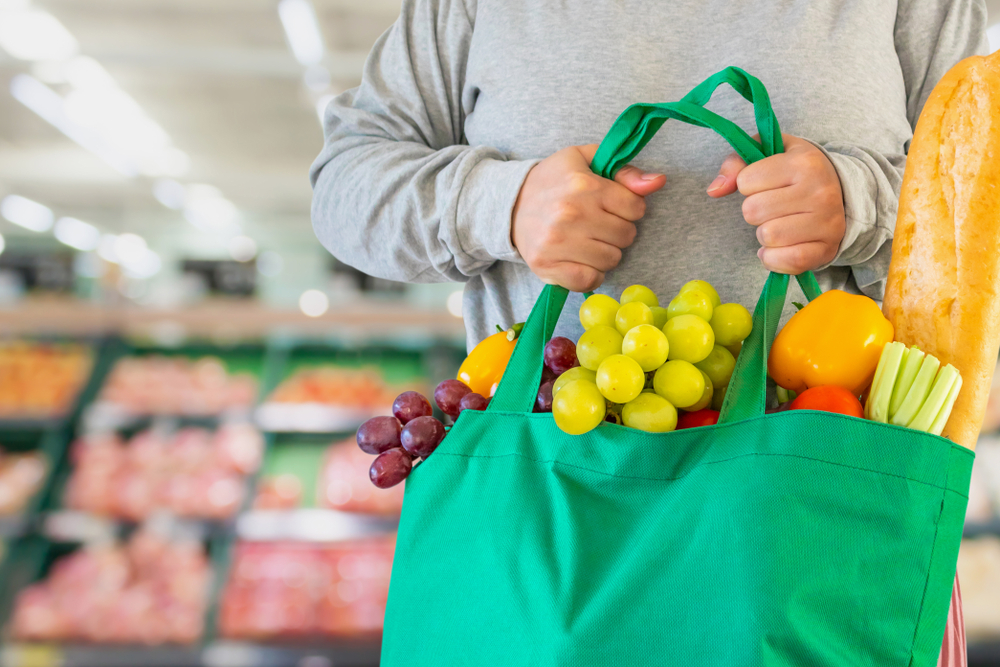What kind of reusable bag is best for the planet?
By Christopher Thompson
A complete guide to carrying your groceries without fueling climate change.
Cutting back on our reliance on single-use plastics increasingly seems like a win for the environment. From furthering fossil fuel dependence to harming marine life, the evidence of plastic’s far-reaching impacts is mounting. One easy way for consumers to reduce the amount of waste accumulating in landfills and water is to switch to reusable shopping bags.
Or so you’d think. Even reusable bags come with environmental costs, as many reports have shown. These reports, called life cycle assessments, track the various impacts produced during manufacture, transport, and disposal of different types of bags. But they’re not perfect, and fail to capture what happens to plastic as litter or contamination in the recycling stream. With that in mind, here’s a breakdown of what we know about the impacts of different bag materials.
Although these bags are made from oil and gas, they’re also lightweight and thin and therefore require relatively little resources to make. On a bag-to-bag basis, life cycle assessments tell us their impact to the environment is less than most reusable bags. But that’s provided that these bags are disposed of correctly—returned to the grocery store for recycling or at least properly landfilled. In reality, only less than five percent are recycled and many become litter simply because they easily fly away with a gentle breeze. When you do use these bags, the most environmentally-friendly way to dispose of them is to recycle them with other film plastics—just don’t put them in your curbside bin because they’ll get tangled in machinery and contaminate other materials.
These are the thicker plastic bags that are often sold for a few cents in places that have banned single-use bags. Especially when they’re made of recycled material, they seem like a good alternative to disposable bags. But the extra plastic means making them requires more resources. So, you need to reuse them at least eight times to match the environmental impact of single-use bags, according to a study done for the state of California. And, as with the single-use bags, it’s still important to recycle them if possible. In the United States, there’s established recycling infrastructure for polyethylene (the main substance in the bags) which can be recycled 15 to 20 times.
Polypropylene bags
These are the cloth-like totes available for cheap and often given away as promotional items. A lot of us already have a bunch. They need to reused 52 times before matching the impacts of single-use plastic, though, according to a study from Denmark. But, while that estimate might be accurate for Denmark, other studies have found differently. For the same number of uses, the aforementioned California study found non-woven polypropylene bags “require significantly less energy, emit 87% less GHG, [and] generate 91% less waste” than single-use plastic bags.One downside of these bags is that they’re generally not recyclable. And given meat and dairy products can leak, creating a nice petri dish of your bag, some experts have suggested that bags carrying those foods should be washed once a week, which requires a lot of water. (If it makes you feel better, most of us never wash our bags.
Cotton totes
Since it’s made of natural fibers, it might be intuitive to assume cotton is eco-friendly. But pretty much all assessments comparing bags agree that cotton totes have the worst impact. Cotton takes a lot of water to grow, fertilizing it leads to river and ocean pollution, and it is energy-intensive to convert the raw fibers to textile. For a particular organic tote, the Denmark assessment found that you’d have to reuse it 20,000 times to match the impact of a single plastic bag. That really high number is based on a ozone-depleting chemical used in manufacture (which some have argued is an unrealistic representation of cotton manufacture). In terms of contributing to global warming, the same totes only needs to be reused 149 times. And, especially if you use if for years, you’ll still be cutting back on plastic pollution.
Polyester
Essentially woven plastic, polyester makes for a convenient, durable reusable bag material. It’s easily folded or squeezed into a stuff sack so you can always keep it with you. In the Denmark study, the polyester bag only needed two reuses to match the greenhouses gases emitted in making a single use bag, and 35 times for all impacts. It’s still plastic, though, and those little fibers might be polluting the ocean with every wash.
Bioplastics
These are plastic-like materials made from biodegradable sources, often corn. The raw materials are renewable, and—given the right facilities are available in your area—they can be recycled into soil. But they’re not a great alternative to single-use plastic bags, because it can take 42 reuses to have the same impact as a traditional receptacle, as the Danish study reports. And if they’re not actually getting composted at an industrial-scale facility, they can pollute the environment as litter, too.
Paper uses more water and energy to make than plastic. The California assessment says that paper bags use three times the nonrenewable energy, up to 17 times as much water, and release twice the greenhouse gas emissions. And, since they’re typically not reused many times (they rip), it’s hard to lower that impact. When you do use them, they can be recycled via your curbside bin. Overall, paper does avoid the pollution problems of plastic, but isn’t a solid alternative.
No sack is perfect, but your best bet is using whatever reusable bags you already have. If you have to buy new, opt for reusable plastic, polypropylene, and polyester. Ultimately, the ideal bag is the one you’ll actually use over and over.

